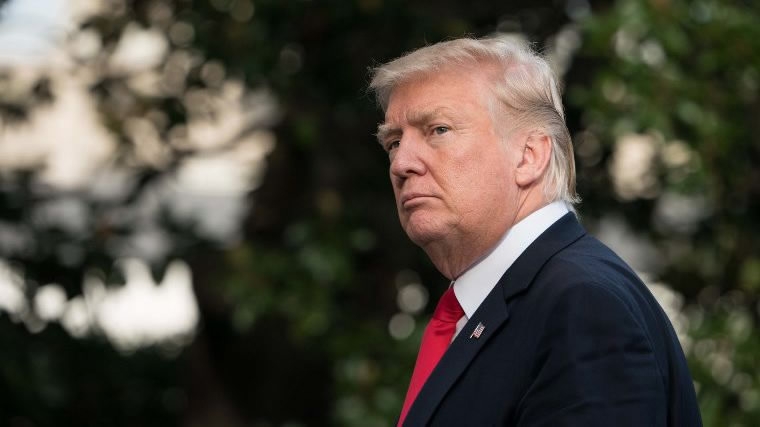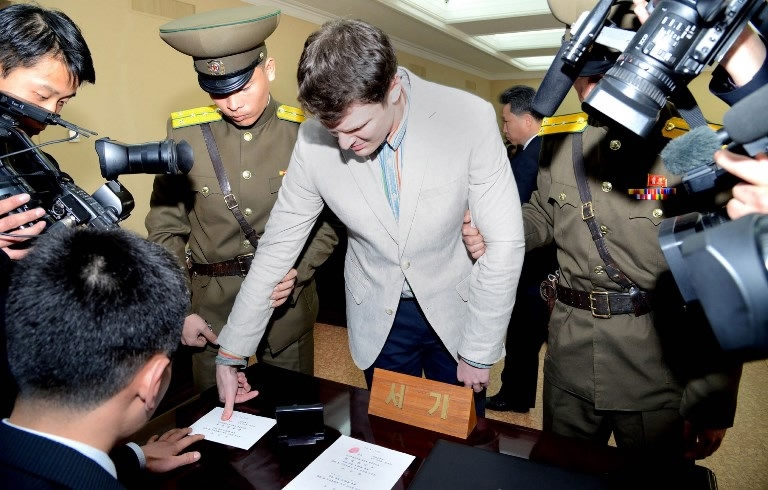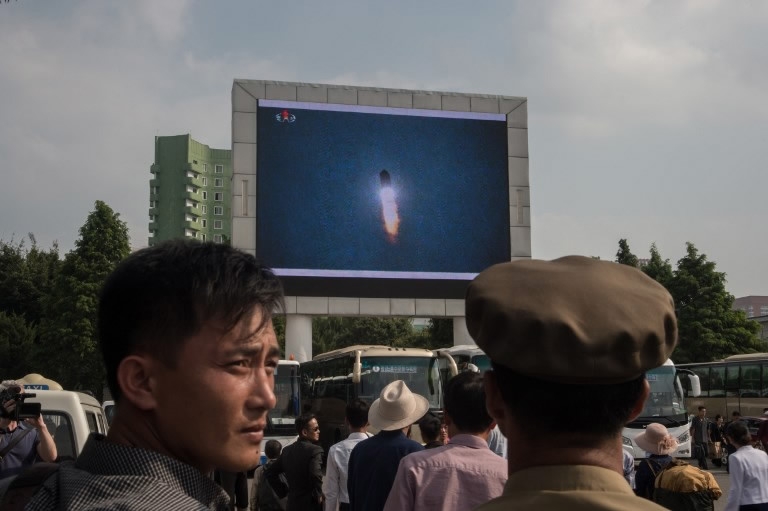
Politics
17:05, 01-Sep-2017
US ban on DPRK travel comes into force
CGTN

Washington’s ban on US citizens travelling to the Democratic People's Republic of Korea (DPRK) came into force on Friday, following the death of US student Otto Warmbier in June.
The 22-year-old boy died a few days after he was sent home in a mysterious coma following more than a year in prison in the DPRK. He had been convicted of offences against the state for trying to steal a propaganda poster from a Pyongyang hotel and sentenced to 15 years’ hard labor.

US student Otto Frederick Warmbier, who was arrested for committing hostile acts against DPRK, attends the trail at the Supreme Court in Pyongyang on March 16, 2016. /AFP Photo
US student Otto Frederick Warmbier, who was arrested for committing hostile acts against DPRK, attends the trail at the Supreme Court in Pyongyang on March 16, 2016. /AFP Photo
US State Department says on its website that it took the decision due to “the serious and mounting risk of arrest and long-term detention of US citizens”.
Three Americans accused of various crimes against the state are behind bars in the DPRK, which is engaged in a tense standoff with the administration of US President Donald Trump over its missile and nuclear weapons programs.
Earlier this week Pyongyang launched a missile over Japan, in a major escalation, and it has threatened to fire rockets towards the US Pacific territory of Guam. In July it carried out its first two successful tests of an intercontinental ballistic missile, apparently bringing much of the US mainland into range.

DPRK’s intermediate-range strategic ballistic missile Hwasong-12 lifts off from the launching pad at an undisclosed location near Pyongyang on August 29, 2017. /AFP Photo
DPRK’s intermediate-range strategic ballistic missile Hwasong-12 lifts off from the launching pad at an undisclosed location near Pyongyang on August 29, 2017. /AFP Photo
Exemptions to the travel ban are available for journalists, Red Cross representatives, those travelling for humanitarian purposes, or journeys the State Department deems to be in the national interest of the US.
But NGOs working in the DPRK privately express concerns about how the process will function and the potential impact on their work.
A few remaining US citizens in the country left on Thursday, reports said.
Americans represent around 20 percent of the 5,000 or so Western tourists who visit the DPRK each year, with standard one-week trips costing about 2,000 US dollars and budget journeys about half that.

A screen shows news coverage of an August 29 missile test launch in a public square outside a train station in Pyongyang on August 30, 2017. /AFP Photo
A screen shows news coverage of an August 29 missile test launch in a public square outside a train station in Pyongyang on August 30, 2017. /AFP Photo
DPRK’s tourism development officials have said the ban will have no effect on the economy, with one said in July: “If the US government says Americans cannot come to this country, we don’t care a bit.”
Other curious foreigners still travel to the DPRK, and an art symposium in Pyongyang this week saw foreign artists, most of them European, working together with their DPRK counterparts.
Norwegian artist Marius Engan Johansen and his DPRK’s counterpart Ri Pak sculpted clay busts of each other on either side of the same stand.
DMZ Academy organizer Morten Traavik claimed that one of the events’ aims was “to show the wider world in this special critical time that communication is possible”. “By working together and by trying to understand each other… it is possible to communicate when both sides have a will and wish to do so,” he said.
Source(s): AFP

SITEMAP
Copyright © 2018 CGTN. Beijing ICP prepared NO.16065310-3
Copyright © 2018 CGTN. Beijing ICP prepared NO.16065310-3